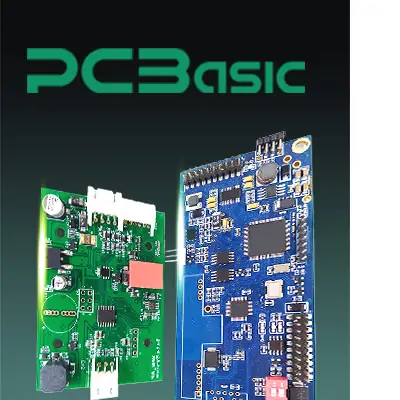

Global high-mix volume high-speed PCBA manufacturer
9:00 -18:00, Mon. - Fri. (GMT+8)
9:00 -12:00, Sat. (GMT+8)
(Except Chinese public holidays)


Global high-mix volume high-speed PCBA manufacturer
9:00 -18:00, Mon. - Fri. (GMT+8)
9:00 -12:00, Sat. (GMT+8)
(Except Chinese public holidays)
HomePage > Blog > Knowledge Base > What is ICT Testing? | In-circuit Test's Comprehensive Guide
In-circuit testing (ICT) is one of the most important processes in PCB manufacturing. During the process, it can analyze the manufacturing deformities of printed circuit boards (PCBs). Concerns include soldering problems, poor parts, and electrical problems of link up, ICT assists the manufacturers in eliminating these vices from reaching the clients.
Therefore, with the electronics industry's growth, using testing solutions including ICT testing, has become critical and complementary to this industry. Since the PCB market is estimated to reach over $72.7 billion in the global market by 2026, it becomes paramount that a testing method such as ICT is embraced to provide quality assurance and recall reduction.

After reading this article, you will learn the importance of ICT, how it functions, and why it is crucial for avoiding potential issues in PCB production. This will give knowledge of how the testing is done, types of equipment used in testing and why testing is important and beneficial to electronics manufacturers.
In PCB Test
ICT testing is important in ascertaining that each element on a PCB is rightly positioned and in good working order. Electrical probes are employed to diagnose problems. These problems could be soldering flaws, shorting, and dislocation.
It helps in the removal of bad PCBs that were made during manufacturing process. It also assists in the prevention of overall failure and saves costs. Results of studies carried out in the ICT industry show that ICT methodology can identify approximately 30 percent of PCB flaws that can improve manufacturing efficiency.
In Electronics Manufacturing
In electronic manufacturing, ICT testing plays a vital role in the quality checking of PCBs, which is known as the heart of any electronic device. Manufacturers can quickly identify any lapses once they incorporate ICT machines in production lines, improving efficiency while at the same time minimizing time wastage. ICT current consumption elevates, and as a result, ICT testing guarantees products that tally with the industry trends.
In-circuit testing (ICT) has many advantages when it comes to PCB testing, which gives manufacturers several benefits.
1. High-Fault Coverage: It effectively identifies problems such as short circuits, the absence of components, and faults of soldering, giving up to 90% or more of PCB tests.
2. Speed: ICT machines can test several boards in one cycle and can significantly add to production outputs.
3. Ease of Use: With a standard ICT test fixture, it is possible to perform tests without an extreme focus on distinct knowledge.

ICT testing also has some disadvantages that should be taken into account.
1. Initial Setup Cost: Whereas ICT proves cheaper in the long run, the start-up costs for ICT machines and test fixtures can be steep, particularly for the small players in the market.
2. Limited to Simple Tests: ICT is excellent in the identification of regular faults and could be better in identifying out-of-the-ordinary or other peculiarities of boards.
3. Physical Access Required: To operate ICT, one needs to lay hands on the board. So, it cannot be applied on compact or densely compacted boards.
In this process, known as In-Circuit Testing (ICT), it becomes easier to test the functionality of the circuits on PCBs and identify faulty components. This includes the usage of probes to identify short circuits in addition to different values such as power off and power on tests. Here are some principles you should mention:
Types of Test Fixtures
Custom Test Programs
Every ICT machine is customized with the PCB design to check the components and decide whether they pass or fail by the nodal responses.
Error Detection and Diagnosis
This is the reason ICT rapidly detects such problems as poor soldering or wrong connection of components to ensure early correction.
Thus, through ICT testing, manufacturers can identify, derivate and deliver high-quality printed circuit boards while maintaining reasonable production costs.

In-circuit test (ICT) comprises the techniques that are used to test PCBs to ensure they perform as required without and with faults. Every method is used for a specific purpose, thus providing different benefits and meeting different testing purposes. Here's a closer look at the primary ICT testing methods used in the industry:
The ICT testing process includes several significant steps to ensure that PCBs do not contain defects and operate effectively. This process combines different testing strategies and approaches that are used in the evaluation of the board quality.
1. Preparation: The process starts with the PCB and the ICT test fixture preparation in detail. It is placed back on the test fixture where electrical probes are put in contact with designated points on the board.
2. Programming: A test program is fed into the ICT machine, which indicates the test's parameters and conditions. As part of this program, requirements relating to the electrical characteristics of each node/connector on the PCB are defined.
3. Testing: The ICT machine makes use of electrical signals that are passed through the test points on the PCB. The machine records the input resistance, capacitance, and voltage and checks if they are equal to the operational values.
4. Analysis: The data obtained from the tests are then compared with the theoretical values to determine the variance. This process allows the ICT machine to mark all the defects or anomalies observed in the test.
5. Reporting: A report is created after the test concerning the detected faults, with information given concerning the area of the faults. This report assists the manufacturers in ascertaining and rectifying problems before the boards move forward for the other operations.
6. Correction: From the testing, a manufacturer can perform some changes or even perform repairs on the PCB. It helps filter out substandard boards to ensure that only the best boards make it to the final assembly and shipment.
In-circuit testing, or ICT, could test various components on the PCB to establish their functionality and location. The following components are typically tested during the ICT process:

ICT testing is expected to detect flaws in PCBs, so only flawless boards will go through manufacturing. Common defects detected by ICT include:


It is indeed important to test PCB and one of the necessary methods to perform testing is In-circuit Testing (ICT). The testing is an addition to the conventional testing methods of power-off testing, power-on testing, boundary scan testing, and bed of nails testing to identify the defects at the initial stage of manufacturing lines. This is done using the ICT machine, which offers quantitative measurement results and qualitative analysis of the faults.
In order to evaluate the most effective testing opportunity for customers, the ICT Test of PCBasic has been created. Based on the model, it is designed to enhance the correct testing capability. Its authorized trusted tester certification helps you understand that its technology is reliable by industry standards and your PCBs will be tested fully.
 About PCBasic
About PCBasic
Time is money in your projects – and PCBasic gets it. PCBasic is a PCB assembly company that delivers fast, flawless results every time. Our comprehensive PCB assembly services include expert engineering support at every step, ensuring top quality in every board. As a leading PCB assembly manufacturer, we provide a one-stop solution that streamlines your supply chain. Partner with our advanced PCB prototype factory for quick turnarounds and superior results you can trust.
1. What is an ICT Test Fixture: Why does it matter?
An ICT test fixture supports and clamps the PCB during testing and physically interconnects with the ICT machine to provide the measurements. This is extremely important, particularly when performing tests to make sure that results are accurate and consistent.
2. What are the types of ICT test fixtures?
Usually, there are beds of nail fixtures that require many probes, and fixtures for boards vary. Both have their pros and cons, but it all depends on whether it is needed to produce a complicated PCB and/or tests to be run out.
3. The ICT Test vs. the Functional Test
ICT testing reveals manufacturing faults, such as soldering problems, with the board turned off, while functional testing uses power-on testing. Both are important and necessary to be implemented to have a holistic system in assessing the quality.
4. Why is a certified trusted tester important to ICT testing?
Trusted tester certification affirms that the ICT machine and testing procedures correspond to known benchmarks, which can constantly deliver reliable and accurate outcomes.

Assembly Enquiry
Instant Quote
Phone contact

+86-755-27218592
In addition, we've prepared a Help Center. We recommend checking it before reaching out, as your question and its answer may already be clearly explained there.
Wechat Support

In addition, we've prepared a Help Center. We recommend checking it before reaching out, as your question and its answer may already be clearly explained there.
WhatsApp Support

In addition, we've prepared a Help Center. We recommend checking it before reaching out, as your question and its answer may already be clearly explained there.
